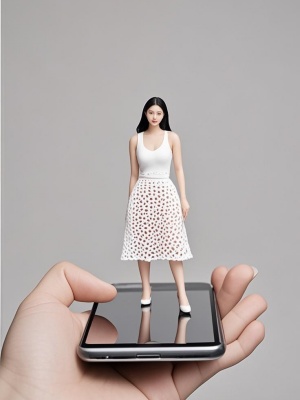Pop Art Colouring: A Vibrant Exploration of Artistic Expression
Introduction to Pop Art Colouring
Pop art colouring is a dynamic and engaging form of artistic expression that draws inspiration from the Pop Art movement of the 1950s and 1960s. Characterized by bold colors, high contrast, and often whimsical subject matter, pop art colouring offers a unique way to bring everyday objects and portraits to life. Whether you're an artist, hobbyist, or someone looking to explore creative outlets, pop art colouring provides endless possibilities for self-expression.
At its core, pop art colouring is about embracing vibrant hues and striking contrasts. This style often incorporates elements from popular culture, such as comic books, advertisements, and celebrity portraits. If you're interested in learning more about transforming portraits into art, check out our Portrait to Art Detail guide.

The Origins and Evolution of Pop Art Colouring
Historical Background
The Pop Art movement emerged as a reaction to the abstract expressionism of the 1940s and 1950s. Artists like Andy Warhol, Roy Lichtenstein, and Richard Hamilton sought to blur the lines between "high" art and popular culture. They used bright, saturated colors and commercial imagery to create works that were accessible and relatable to the general public.
Modern Adaptations
Today, pop art colouring has evolved beyond traditional canvases. Digital tools and AI-powered platforms have made it easier than ever to create pop art masterpieces. For instance, our AI Painting Guide offers insights into how technology can enhance your pop art projects.

Key Characteristics of Pop Art Colouring
Pop art colouring is defined by several distinctive features:
- Bold, Vibrant Colors: Think neon pinks, electric blues, and sunny yellows.
- High Contrast: Black outlines and stark color differences make images pop.
- Repetition and Patterns: Inspired by mass production and advertising.
- Everyday Imagery: Common objects and celebrities often serve as subjects.
How to Get Started with Pop Art Colouring
Choosing Your Tools
Whether you prefer traditional mediums like markers and acrylics or digital tools like tablets and software, the right tools can make all the difference. For digital enthusiasts, our Text to Image feature can help you generate pop art-inspired designs effortlessly.
Selecting a Subject
Popular subjects for pop art colouring include:
- Portraits (especially with exaggerated expressions)
- Everyday objects (like soup cans or sneakers)
- Iconic symbols from pop culture
Advanced Techniques in Pop Art Colouring
For those looking to take their pop art colouring to the next level, consider these techniques:
- Ben-Day Dots: Mimic the printing technique used in comic books.
- Color Blocking: Use large areas of solid color for dramatic effect.
- Mixed Media: Combine digital and traditional methods for unique textures.
For more inspiration, explore our Gallery featuring stunning pop art creations from talented artists.
The Therapeutic Benefits of Pop Art Colouring
Beyond its visual appeal, pop art colouring offers numerous mental health benefits:
- Reduces stress and anxiety through focused creativity
- Boosts mood with its vibrant, energetic colors
- Enhances problem-solving skills through color theory application
Conclusion: The Enduring Appeal of Pop Art Colouring
Pop art colouring remains one of the most accessible and enjoyable art forms for people of all skill levels. Its bold aesthetics and cultural relevance continue to inspire new generations of artists. Whether you're creating traditional artwork or experimenting with AI art tools, pop art colouring offers endless opportunities for creative expression.
For further reading on art techniques, consider these authoritative external resources: Tate Museum's Pop Art Guide and MoMA's Pop Art Resources.
